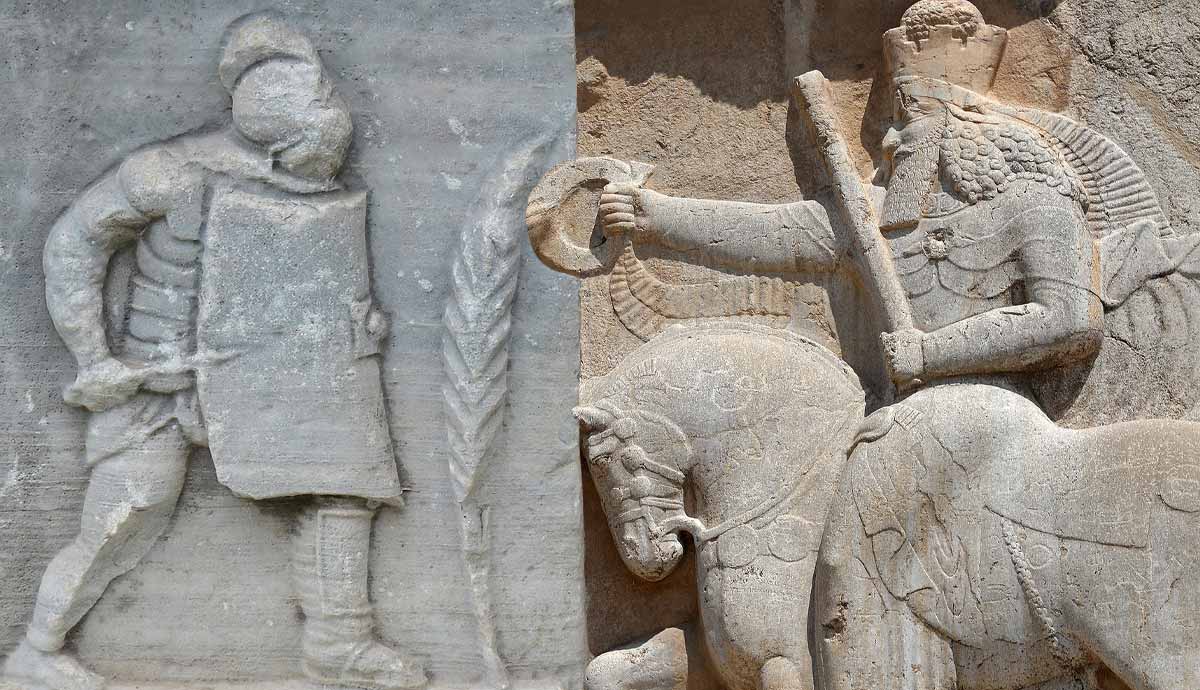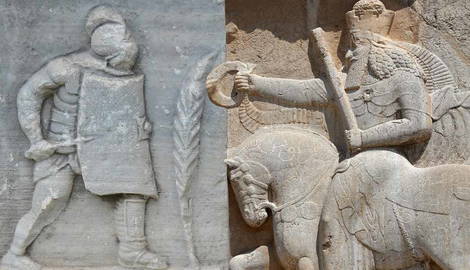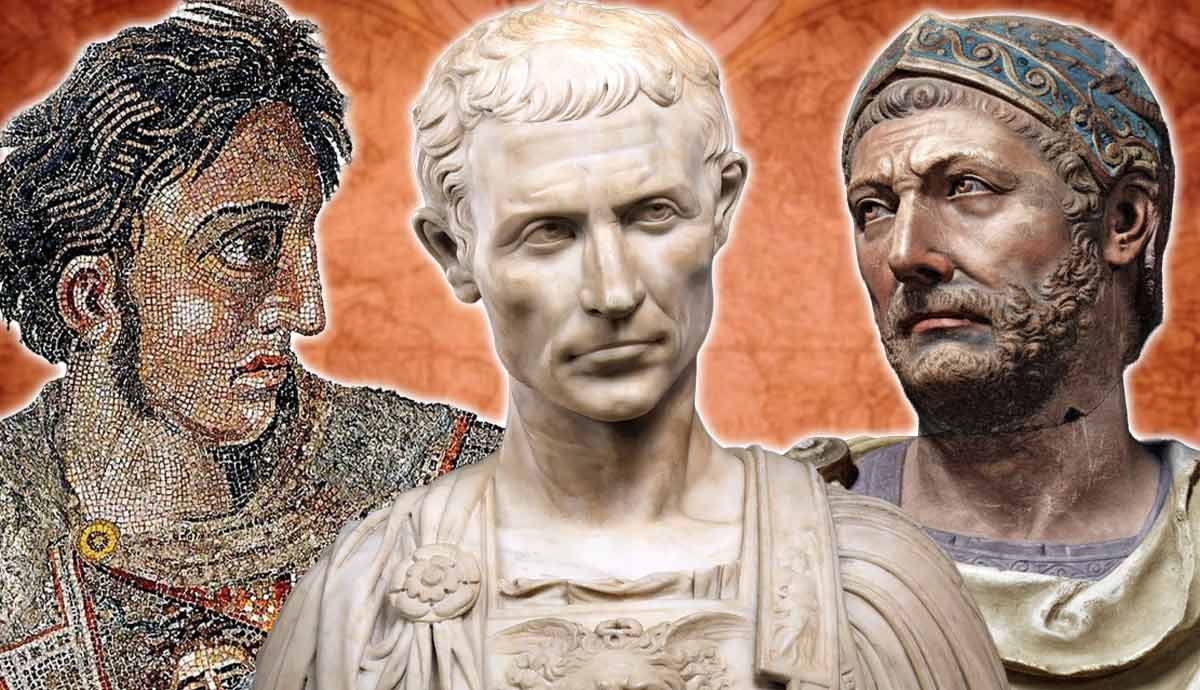
The Sassanian Empire, founded in 224 CE by Ardashir I, overthrew and replaced the Parthians as a dominant power in the Middle East and Iran. The Sassanid rulers revived the cultural and political heritage of the Achaemenid Empire, spreading their influence and Zoroastrian religion through military conquest and political maneuvering. For four centuries, the Sassanian Empire played a crucial role in the history of the ancient world, becoming a major rival of the Roman Empire. However, following the internal revolts and a long war with Rome, the Sassanian Empire fell to the Arab forces united by Islam, in 651 CE.
The Sassanian Empire Replaced the Parthians

The Sassanian Empire emerged from the decline of Parthia, which had ruled over Iran and the Middle East for nearly four centuries. By the early third century CE, internal struggles and a long and costly war with Rome weakened the once mighty Parthian Empire. Around 224 CE, Ardashir I, a local ruler of Persis (modern-day Fars, Iran), exploited the opportunity and rebelled against the Parthian king Artabanus IV. After a decisive victory at the Battle of Hormozdgan, the Parthians were no more. Ardashir I became the first ruler of the Sassanian Empire.
Unlike the Parthians, who originated from a nomadic tribe of Parni, the Sassanids were an Iranian Persian dynasty. As such, Ardashir and his successors profoundly transformed the region’s political, cultural, and religious landscape. The Sassanian rulers centralized their authority, reviving the cultural and political heritage of the Achaemenid Empire. It was a reversal of the roles. Gone was the Parthian link with Hellenism, while the Persian traditions and customs were brought back, including Zoroastrianism, which became a state religion. A new era in Iranian history had begun, with the Sassanids establishing one of the ancient world’s most powerful and enduring empires.
The Sassanids Were Rome’s Greatest Rival

This cultural and political shift caused a major change in the relationship with its greatest rival – Rome. Since Crassus’ defeat at Carrhae in 53 BCE, Parthia and Rome waged wars but also engaged in trade and diplomacy. The Sassanids took a different approach, turning hostile to their western rival. For four centuries the two empires clashed over control of Mesopotamia, Armenia, and the wealthy trade routes of the Near East, including the most important, the Silk Road. The second Sassanid ruler, Shapur I, won a major victory in 260 CE when he captured Roman emperor Valerian at the battle of Edessa.
The rivalry between Rome and the Sassanians extended beyond mere military conflict. It was also an ongoing competition between two equals for influence over the minor but strategically important kingdoms between the two empires, most notably Armenia and Palmyra. The resurgence of the Roman Empire under Aurelian, and later Diocletian and Constantine, leveled the field. Still, no emperor managed to venture further than Ctesiphon, with emperor Julian’s ill-fated Persian campaign being the last attempt to reach the Sassanid capital before the explosion of hostilities in the seventh century.
It was a Military Superpower

One of the reasons why the Sassanids could counter and defeat the Roman Empire was their military strength. The Sassanian military was a sophisticated and well-organized force that relied on its famed light and heavy cavalry. The cavalry was the backbone of the Sassanid army. The famed cataphracts, the heavy armored cavalry, caused fear in the opposing ranks by their mere presence. When charging, those fearsome warriors were unstoppable. The elite horsemen, mostly aristocrats, were equipped with heavy lances and maces, but could also shoot with bows and arrows.
The Sassanians light cavalry, often composed of mercenaries and tribal people within the Empire, employed the Parthian shot, showering the enemy infantry with arrows from a distance. Unlike their predecessor, however, the Sassanid military also employed war elephants and powerful siege engines, enhancing their capabilities in open-field battles and allowing them to take heavily fortified Roman fortress cities. This powerful and versatile military force allowed Sassanids to conduct successful campaigns against Rome, push deep into Roman territory, and defend their own empire against numerous invasions. The Sassanian military tradition left a lasting impact, influencing the tactics and strategies of later Islamic and Byzantine forces.
The Sassanians ruled over an Iranian Empire

Unlike the Parthians, the Sassanian Empire was a quintessentially Iranian state, deeply rooted in the cultural, religious, and political traditions of ancient Persia. The Sassanid rulers saw themselves as the successors of the Achaemenid kings. They made concerted efforts to revive and promote Iranian culture, which had been influenced by Hellenistic and Parthian elements. The Sassanian rulers promoted Persian art, architecture, and literature. The distinctive Sassanian style, characterized by grand palaces, intricate rock reliefs (such as those at Taq-e-Bostan and Naqsh-e Rostam) and elaborate metalwork, became a symbol of the Iranian cultural renaissance.
Perhaps the most important revival was that of Zoroastrianism, which, under the Sassanids, was elevated to the state religion. The magi, Zoroastrian priests, held significant power and influence in the court and society, and fire temples were built across the empire. This emphasis on Zoroastrianism helped unify the empire’s diverse populations under a common religious and cultural identity.
The Sassanian Empire Fell to the Arabs

Despite waging wars with Rome, the Sassanian shahanshah “King of Kings” never tried to annihilate his western rival. This changed in the seventh century, when Khosrow II invaded the Roman Empire, aiming for its capital, Constantinople. Described as the “Last Great War of Antiquity”, the mammoth clash between two ancient rivals was a battle to the death. Eventually, the Romans under emperor Heraclius emerged victorious, but the long and costly war weakened both empires.
Thus, when the Arabs invaded, the old rivals made an alliance, trying to stem the Muslim tide. It did not work. The Romans suffered a decisive defeat at the Battle of Yarmuk in 636, leading to the loss of the eastern provinces, Egypt and all of Africa. The Romans, however, survived. The Sassanids did not. Weakened by the wars and internal strife, the Sassanians were ill-prepared to resist the Arab conquest, suffering defeats at Qadisiyyah in 636 and Nahavand in 642.
By 651 CE, with the death of the last Sassanian ruler, Yazdegerd III, the Sassanian Empire effectively ceased to exist, marking the end of over a millennium of Persian imperial history and the beginning of a new Islamic era in the region.










